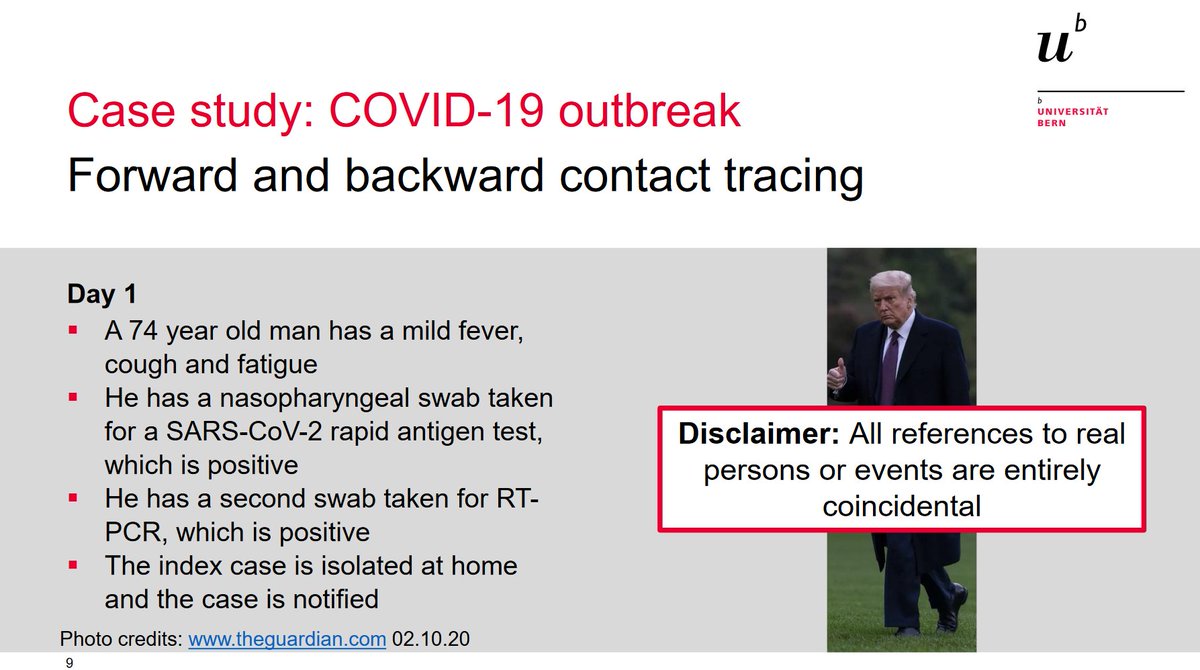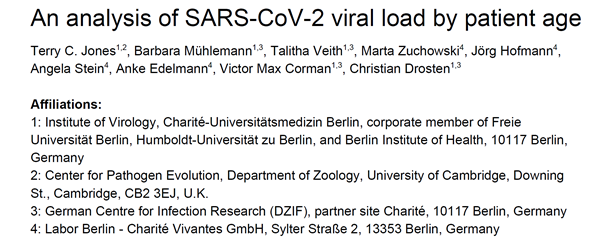
People are talking about *forward* and *backward* #ContactTracing #COVID19
What do they mean?
I made a case study for the @GOARN @WHO contact tracing group
A fictional contact tracer’s tale
My slides are here:
ispmbern.github.io/covid-19/Forwa…
Short thread (1/7)
What do they mean?
I made a case study for the @GOARN @WHO contact tracing group
A fictional contact tracer’s tale
My slides are here:
ispmbern.github.io/covid-19/Forwa…
Short thread (1/7)

Most #ContactTracing seeks contacts from 2 days before the infected person developed symptoms
#SARSCoV2 can be transmitted before symptoms emerge.
That is looking *forwards*
Who might the index case have infected?
Contacts in quarantine soon enough won’t infect others
2/7
#SARSCoV2 can be transmitted before symptoms emerge.
That is looking *forwards*
Who might the index case have infected?
Contacts in quarantine soon enough won’t infect others
2/7
Forward contact tracing can break onward transmission chains.
But it doesn’t find the source who infected the index case
To find the source, we need to go *backwards*
Index cases are more likely to have been infected by a source, who also infected others in a cluster
3/7
But it doesn’t find the source who infected the index case
To find the source, we need to go *backwards*
Index cases are more likely to have been infected by a source, who also infected others in a cluster
3/7
An important characteristic of #SARSCoV2 shows why going *backwards makes sense
It doesn’t transmit randomly. Best shown here, by @jburnmordoch
And shown v early on ncbi.nlm.nih.gov/pubmed/32019669
4/7
It doesn’t transmit randomly. Best shown here, by @jburnmordoch
https://twitter.com/jburnmurdoch/status/1311660310156066816?s=20
And shown v early on ncbi.nlm.nih.gov/pubmed/32019669
4/7
So, #BackwardContactTracing focuses on high-risk potential #superspreading events
Look at our index case's garden party
After finding a cluster, you need to trace *forward again
Needs speed, effort, communication, cross-checking records, #TestTestTest and quarantine
5/7
Look at our index case's garden party
After finding a cluster, you need to trace *forward again
Needs speed, effort, communication, cross-checking records, #TestTestTest and quarantine
5/7

Mathematical modelling finds #BackwardContactTracing identifies more infected contacts per index case and reduces effective reproduction number more than #ForwardContactTracing alone: @medrxivpreprints
doi.org/10.1101/2020.0…
doi.org/10.1101/2020.0…
6/7
doi.org/10.1101/2020.0…
doi.org/10.1101/2020.0…
6/7
When #COVID19 cases are increasing rapidly, @c_drosten says «Looking back is more important than looking forward»
We should try #ClusterBusting in countries as well as Japan and South Korea
Let's evaluate it too
zeit.de/2020/33/corona…
7/7
We should try #ClusterBusting in countries as well as Japan and South Korea
Let's evaluate it too
zeit.de/2020/33/corona…
7/7
• • •
Missing some Tweet in this thread? You can try to
force a refresh



